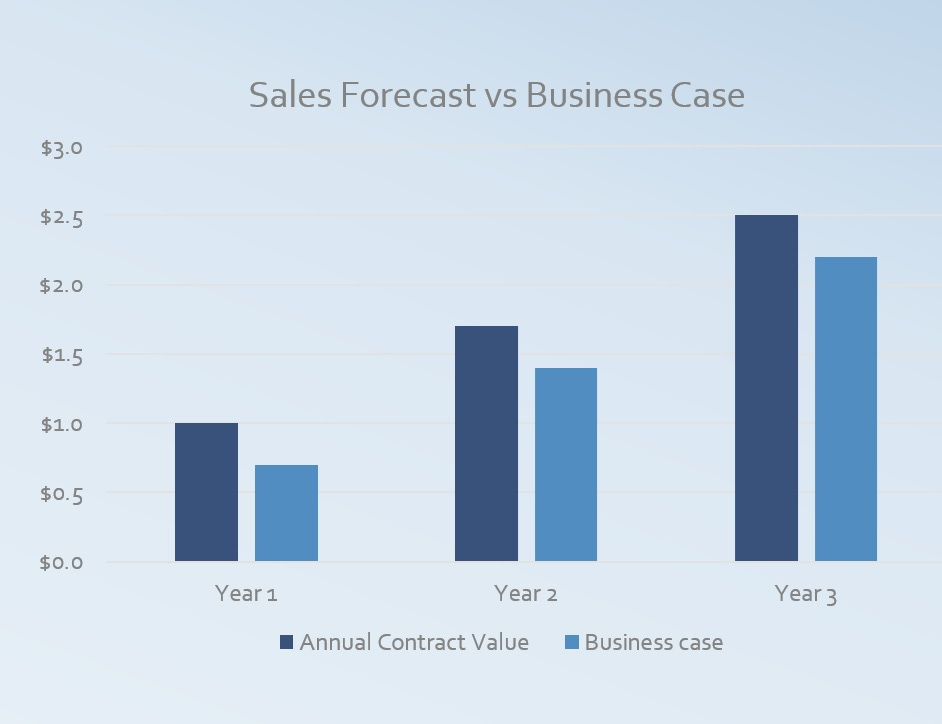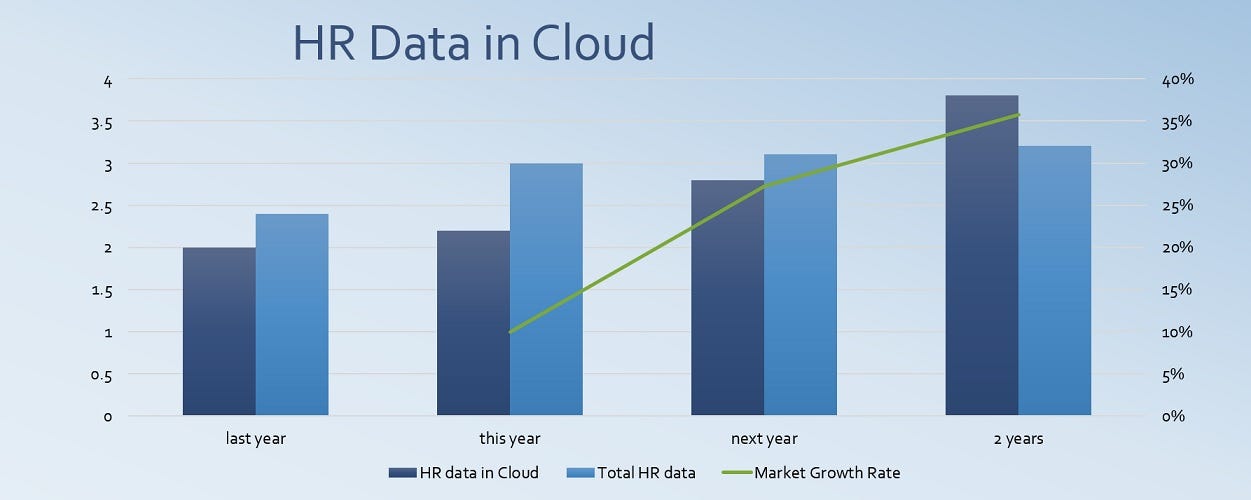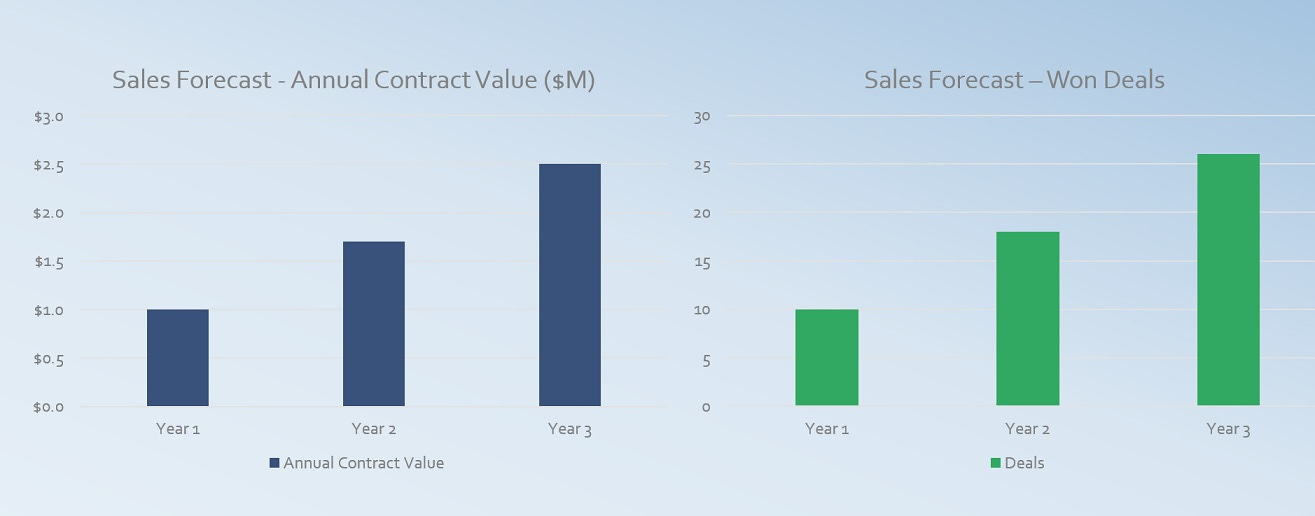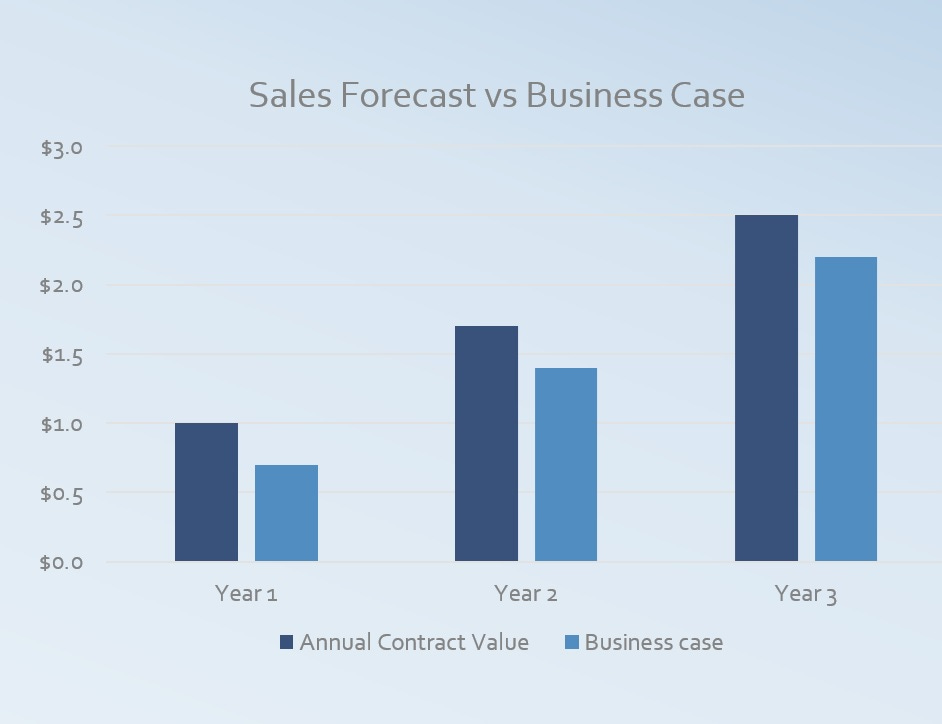A Step-by-Step Guide to Presenting Your Sales Forecast
The art of presenting a compelling sales forecast
At last, your product team is buying into your business case! The market is growing and the engineering team understands the requirements. Your stakeholders need sales to commit to the forecast in your business case. You need to get this commitment or your stakeholders won't approve your go-to-market plan.
Your sales team has reviewed your forecast with you and keeps you involved in sales. Can you send your head of sales an email asking for approval of the forecast? Not a good idea! A better approach is to present your sales forecast to key sales leaders. How do you make your sales forecast presentation relevant to a busy sales leader?
You don't want to present the raw business case and you shouldn't present the marketing strategy. Here are the steps to make a winning sales forecast presentation that gets buy-in from sales leaders:
Provide valuable inside information on the business opportunities
Relate the business opportunity to the pipeline
Visualize the sales forecast and the revenue projections
Communicate the broader perspective
Valuable Inside Information on Business Opportunities
Providing information on sales trends and new market information is a great way to get the attention of the sales team. Having new information is helpful in customer conversations and can be an excellent reason to revisit a customer that is considering your product.
Here are a few ideas on insider information:
A recent market forecast showed growth in a segment that needs your product
Summarize a current sales trend where account teams used creative ways to close sales
Tie the significant business case themes to the sales and market trends
The below example can be used to set up your sales forecast with your discussion about the relevance of your product.
Relate the Business Opportunities to the Sales Pipeline
The business opportunities flow into sales leads and the sales pipeline. The health of the pipeline is a key gauge of the sales forecast. If the pipeline is active with few losses, then a sales forecast with growth aligned to the market is easy to accept. However, if there are stalled deals in the pipeline and few won deals, then there is a lot more scrutiny on the sales forecast.
Most of the time when a sales pipeline is unhealthy, more investment in the product is needed. It is very unusual for there to be a sales motion issue. It falls to the product leaders to pick the right set of investments to improve the pipeline. After a set of investments is planned, the stakeholders want to check if the sales forecast can support the investments.
Visualize the Sales Forecast and the Revenue Projection
Now that you have summarized the market growth trend and the pipeline, your next step is communicating the assumptions behind the sales forecast. There are 3 key assumption data points for you to calculate:
The average revenue per unit
The average number of units per customer
Number of wins per qualified lead
These numbers don't need to be exact - shoot to be 20% accurate.
You can calculate the average revenue per unit from your business case by dividing the unit forecast into the revenue projection. The average number of units per customer and the number of wins per qualified lead come from the sales pipeline trends.
Using the assumptions create these graphs to visualize the quarterly sales forecast:
The annual contract value of closed sales - monthly recurring revenue * 12 months
Number of closed sales
Comparison of sales forecast to business case
The below graphs show a way to communicate visually about the sales forecast.
Communicate the Broader Perspective
To wrap up the sales forecast, incorporate some systems thinking to show the broader perspective. A few examples are:
Connection of the sales forecast to the total solution
Other products and services that are pulled through as a result of this sales forecast
Comparison of sales forecast growth rate to the market growth rate
The ratio of the sales forecast revenue to the conservative business case
Show the sales forecast from different perspectives
How much investment is planned and dependency on the sales forecast
How marketing can deliver more leads
Characterizing the impact of changes in the market
Installed base growth rate
Cloud migration rate
Long-term impacts of the sales forecast
Increased market share based on the growth
Margin improvements from scaling the product
Add-on features for sales to existing customers
Seeing the broader story of the sales forecast with follow-on sales and market share growth inspires the whole product team to support the quarterly sales forecast.
The below example is starting place to communicate the broader perspective. You can add information about add-on features, you can mark up to show the margin improvement from the additional sales and you can comment on the incremental sales from your installed base.
Conclusion
The sales forecast and the story behind the sales forecast is a critical job for product leaders to rally the whole team behind growing the product. The steps to a compelling sales forecast story are:
Setup the sales forecast with valuable market information on the demand
Summarize your sales pipeline as a baseline for the sales forecast
Tell the sales forecast story visually
Discuss the broader implications of the sales forecast
Covering these 4 topics in your next sales forecast helps your stakeholders understand the return on investments and inspires the whole organization to contribute to the sales forecast.
Rian van der Merwe writes the Elezea blog on product management, software development, technology, and Internet culture. A recent article that you would enjoy is:
Human systems and the stuff they make Don’t maximize parts of systems or subsystems while ignoring the whole. So easy to fall into the trap of optimizing something that doesn't help the whole system.






